When it comes to reliable power generation, selecting the right generator brand can make all the difference, whether for residential, commercial, or industrial applications. This guide is designed to help you identify the top generator companies that lead the industry in innovation, performance, and durability. From compact portable models to heavy-duty industrial units, these brands are renowned for delivering cutting-edge technology, fuel efficiency, and dependable power solutions tailored to your specific needs. Whether you’re preparing for unexpected outages or ensuring seamless operations for your business, this article will provide the insights you need to make an informed decision. Read on to discover the best generator brands and how they can provide unparalleled power and sustainability for any scenario.
What Makes a Generator the Best Choice for Your Needs?
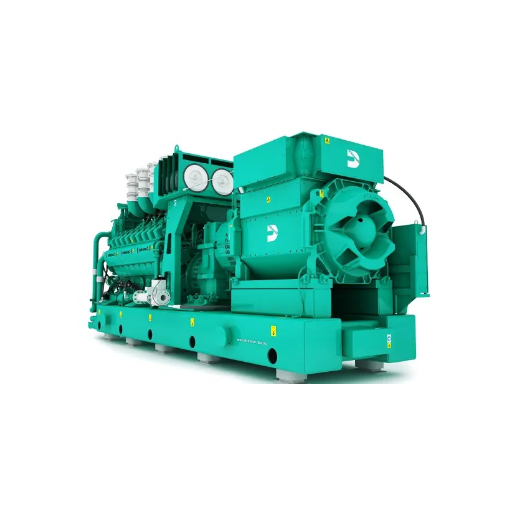
Understanding Different Types of Generators
Generators can be classified according to their functionality, the type of fuel they use, and their intended purpose. They can be used for everything from residential emergency backup utilities to industrial-grade energy supplies.
- Portable Generators: These are easy to move, compact, and gasoline powered, making them ideal for camping trips or short term power outages. Unlike traditional units, advances in technology have made them less noisy and more fuel efficient, enabling them to be used for numerous purposes.
- Standby Generators: These types of generators come with backup systems designed for cities or homes. They work with natural gas or propane and integrate with the home electrical system, which allows them to work efficiently during outages. They provide effortless control and dependability, delegating low-maintenance power to the user with transfer switches.
- Inverter Generators: Inverter generators are best suited for more delicate electronics such as laptops and medical devices due to their clean energy. The traditional noisy portable generators have been reformed to be more residential capable, and their advanced engines guarantee less noisy operation during use.
- Power Industrial Generators: Custom Power Industrial Generators are built to meter out power for large operations like factories, data centers and even hospitals. From diesel, to natural gas, these systems are designed to operate for prolonged periods while maintaining high power output. Their scalability along with robust design make these units a must have for industries powered by critical energy fuel.
These generator types defines the industry user’s needs in spending options. Choosing the wrong generator can devastate costs involving output, available fuel, emission levels and even noise so careful thought should be placed into evaluating power solutions. Making such choices enables efficiency, reliability and long-term value which aids in power solutions.
Key Features of a Portable Generator
From construction sites to emergency household uses, portable generators are extremely reliable and easy to work with. These are some of the top features of portable generators:
- Power Output and Wattage Ratings: Just like every other product, portable generators come with their respective pros and cons. These make it easier for you to control the amount of running or maximum wattage that a generator has. Moreover, portable generators come with various rated outputs, which confirm that all your essential tools and appliances will run without any hassle.
- Fuel Type and Efficiency: A majority of portable generators use gasoline as fuel. However, some models are capable of using propane, therefore being classified as dual-fuel. With how advanced technology is nowadays, numerous new models contain engines that are far more advanced and utilize far less fuel. As a result, the cost of running these generators greatly reduces.
- Noise Level Control: Be it for personal or group usage, the noise output of portable generators is a major concern that has to be kept in mind. Because of this reason, numerous companies have installed fence insulation, which does a great job at muffling noise. As a result, many generators can be used while camping or for various other residential activities.
- Enhanced Portability and Compact Design: Portable generators are purposely designed for easy transport and storage with ergonomic handles and sturdy wheels. This feature expands the portable generator’s usability across different environments without sacrificing functionality.
- Safety Features: A modern portable generator is built with numerous safety mechanisms including automatic voltage regulation (AVR) for consistent power delivery, low-oil shutoff protecting the engine, and circuit breakers to prevent overloads.
- Parallel Connectivity: Some portable generator models offer parallel connectivity for users who demand extra power. This feature enables two compatible units to be attached, thereby boosting power output while still maintaining portability.
- User-Friendly Controls: Advanced control panels allow instant access to outlets, fuel gauges, and engine switches. In addition, some advanced generators come with digital displays, allowing real-time monitoring of generator voltage, frequency, and operating hours.
- Durability and Build Quality: Portable generators are built using durable materials like heavy-duty steel frames and weather-resistant coatings which make the generators endure harsh conditions guaranteeing long-term operation reliability.
The combination of all these factors makes it easy for people to assess which portable generator is best suited for their needs while prioritizing efficiency, safety, and functionality.
How to Evaluate Power Output for Your Requirements
Calculating a generator’s output and determining whether it is adequate for an application’s demand requires electrical detail and careful analysis. Obtain their particular wattage values, taking into consideration both running wattage and surge (starting) wattage. Running wattage is the level of power an appliance requires when it is at its normal operations, while surge (starting) wattage refers to the extra power used when it is starting up, which helps support appliances like refrigerators or air conditioning.
Once all individual wattages are determined, compute running wattage and highest surge wattage. Add both values to establish total power output needed. Standard refrigerator provides 700 watts and utilizes 1200 during surge while television provides 150 watts during use. All these figures set the least standard for the generator’s capacity.
Also, think about the generator’s duty cycle and whether you will require continuous power or intermittent use. Power tools in industrial applications often require them to be more power output dependable and robust. Turn off all other equipment and tools to check if the generator has multiple outlets with different voltages and amperage ratings. Pick a generator that produces a bit more power than what you expect to help meet unplanned increases in your needs later.
How Do Portable Generators Differ from Standby Generators?
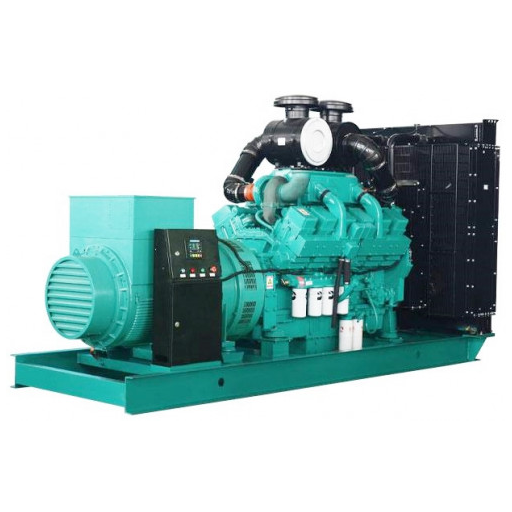
Benefits of a Home Standby Generator
When the power goes out, a home standby generator ensures power is restored automatically to maintain smooth power flow. The most prominent difference Home Standby Generators have over Portable Generators is that they are Permanently installed outside the house and directly connected to the electric system in the house. Thus, greatly reducing the hassle of manual setup during outages.
Another benefit of a standby home generator is that it has completely automated functions, providing ease of use. A generator repeatedly checked powered with sensors will automatically start when it detects a power outage. Most of the models available in the market today have a dual-fuel system which allows the generator to run on natural gas or propane far increasing the amount of fuel supplied for the generator.
Standby home generators also offer the ability to power an entire home’s electric system. Furthermore, advanced standby generators provide the ease of smart monitoring, which allows for tracking performance and fuel depletion via a smartphone app.
Standby generators offer great benefits to homeowners. These generators make sure that people are comfortable during power outages. They also protect valuable perishable items and ensure that security systems are functioning. Moreover, these devices are useful for people living in regions that face natural disasters such as hurricanes and blizzards. These generators go a step further in making sure that people who are environmentally concerned. Modern designs of standby generators have lower noise levels and emission output ,which makes them an eco-friendly choice for power backup.
When to Choose a Portable Power Solution
Portable power options are the best pick in cases requiring flexibility, mobility, and non-constant use. These devices are particularly suited for use in outdoor events, worksites, camping as well as powering devices in the event of power interruptions. They provide the convenience of moving the generator to different locations which is perfect for individuals or businesses who require power in changing locations.
Compared to standby generators, portable generators are generally more compact and lightweight, which makes them easier to store and transport. The latest models incorporate inverter technology, which is cleaner and more stable, making it safe for sensitive electronics, such as laptops and medical devices. These systems also incorporate simple-to-operate controls, fuel-efficient engines, and require little maintenance, which makes them financially favorable for those who use the generator temporarily or occasionally.
Yet, in the case of selecting a portable power solution, wattage, runtime, and even the noise level need to be considered. Even though smaller units may be sufficient for basic appliances, portable power solutions with gasoline or propane fuel options are more versatile. When using fuel, proper outdoor ventilation must be followed to mitigate the risks of carbon monoxide emissions. The above underscores the importance of unit safety protocols, which make the fuel source and operational mechanism portable outdoors. Hence, the solution is portable power that aids in addressing multifaceted energy concerns.
Comparing Power Systems for Residential Use
In power systems for residential applications, evaluating energy efficiency, cost, environmental impact, and scalability is are fundamental consideration. The most prevalent form of electricity in use is still traditional grid electricity, with solar and wind becoming increasingly more popular. Compared to fossil fuels, the power obtained from solar and wind is much less damaging to the environment, though fossil-fueled plants do grid electricity do impose some form of ecological degradation.
Photovoltaic panels that transform sunlight into electricity offer sustainability and are now more affordable than before. With the implementation of new technologies, panel efficiency has improved tremendously, along with storage capabilities. With lithium-ion batteries, users can now store energy for use during calm or cloudy conditions.
Though not widely adopted in residential applications, wind power systems are mainly constrained by space and required wind speeds for ideal energy output. The turbines are most useful in rural areas or near coastal areas, but their adaptability compared to solar systems is low. Regardless, they do serve as a source of renewable energy.
For backup and on-demand power needs in remote locations or during emergencies, generators offer reliable backup power sources. Engines powered by diesel, gasoline, or propane offer consistent energy output, although their operational costs are less favorable when compared to renewable sources. A new trend in the renewable energy sector is the use of backup generators in hybrid systems, which provide more reliability at less cost to the environment.
As with every other power system, there is always a tradeoff involving energy consumption, geographic location, budget limits, and environmental concerns that need to be prioritized. The growing use of advanced smart home technologies and enhanced energy management systems enables even greater integration and optimization of these power solutions, increasing the efficiency and accessibility of the systems for residential consumers.
Are Inverter Generators Worth the Investment?
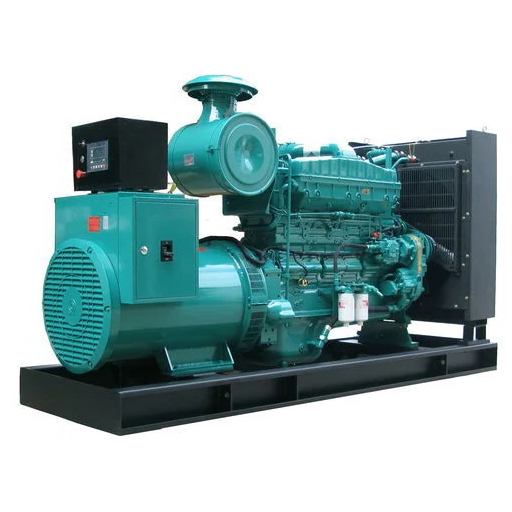
How Inverter Generators Work
The process of generating electricity in inverter generators starts with an engine’s raw mechanical energy and goes through several steps. Unlike inverter generators that first produce raw alternating current (AC) power, process it to direct current (DC) power using a rectifier, and then change the DC back to AC, traditional generators produce AC power directly. Advanced microprocessor technology improves control of electrical waveforms, thereby ensuring precise frequency and voltage output, usually 120V at 60Hz or other regionally predetermined standards.
A main pro of inverter generators is fuel usage. Compared to traditional generators, inverter generators are significantly quieter and fuel-efficient because they modulate engine speed based on the power demand. This is often referred to as “load-sensing technology.” This enables soft and more fuel-efficient operation, particularly in scenarios with lower output. Also, the best example of clean power is inverter generators. This clean and steady electricity makes inverter generators the best fit for powering sensitive electronics like medical equipment, smartphones, laptops, etc, as even the slightest change in power can destroy them.
Parallel capabilities are the latest development in inverter generator technology. This change allows users to connect several generators as one to amplify power. With real-time tracking of fuel levels, load capacity, energy consumption, and other performance metrics, many models now come with digital interfaces for added user satisfaction and dependability across all use cases.
Pros and Cons of Inverter Versus Conventional Generators
Benefits of Inverter Generators
- Best for Fuel Use: Unlike traditional generators, inverter generators have variable engine speed technology. This means that they can modulate the amount of fuel consumed based on the load demand.
- Power Output Stability: The degree of refinement in the inverter generator’s electronic circuitry makes it capable of producing clean and stable electricity in sine wave form. This means that sensitive electronic devices such as laptops and medical equipment can be powered with full security.
- Portability: Inverter generators are designed for easy transport, which makes them lightweight and compact for storage.
- Quiet Modes: Inverter generators work at a lower RPM, which produces far less noise than traditional models. This makes them practical for residential purposes as well as for other forms of recreation.
- Parallel Capabilities: Inverter generators give the flexibility to connect multiple units to enhance power output without relying on a single generator.
Disadvantages of Inverter Generators
- Higher Initial Cost: Due to the advanced features, all models have higher sunk costs compared to traditional generators of equal power.
- Limited Power Output: Inverter generators can be ideal for low to moderate power, but may not work for high-demanding applications such as industrial, large-scale backup systems.
- Increased Complexity: This form of design requires specialized maintenance, which increases the servicing costs in the long run.
Benefits of Conventional Generators
- High Power Capacity: The output capacity of conventional generators is high, and they can be used for industrial activities construction, or can be used if large quantities of energy need to be produced.
- Lower Initial Cost: Due to lacking some sophisticated additional features, these generators tend to be inexpensive based on the heavy duty power requirements, making it possible for those on a budget to be able to afford them.
- Durability and Robustness: Withstanding harsh conditions, the performance of conventional generators is enhanced due to their rugged designs which also increase performance under extreme usage.
Drawbacks of Conventional Generators
- Higher Fuel Consumption: Because the generators work at a constant engine speed regardless of load demand, they are inherently less fuel efficient.
- Unstable Power Output: Because of the restriction of the electrical regulation, conventional generators have the ability to produce power with voltage fluctuations which can damage delicate electronics.
- Bulky Design: Increased size and weight make these units less portable and more difficult to transport or store.
- Noise Levels: In comparison to the other types, conventional generators produce significantly more noise and can be disruptive in and outside of residential settings.
By examining the advantages and disadvantages of each form, users are able to make optimal decisions depending upon their budget, power requirements, and application scenarios.
Best Uses for Portable Inverter Generators
Their compact design, low noise levels, and operating efficiency allow portable inverter generators to be used for a plethora of purposes. Let us look at some of the most effective use cases:
- Camping, RV Getaways, or Tailgating: Outdoor enthusiasts have a quiet source of energy to meet their various needs while preserving the tranquility of nature.
- Home Maintenance: These generators can also serve as an effective backup energy source for a household’s essential appliances like refrigerators, lights, and medical devices during power outages. Their low harmonic distortion means sensitive electronic devices will not be damaged as power is provided.
- Construction Work and DIY Tasks: More portable than conventional generators, inverter generators are great for providing power to tools like drills, saws, air compressors, and other tools at smaller construction sites or for homemakers who like to improve their home.
- Disaster Preparedness: For those living in areas prone to natural disasters like hurricanes and wildfires, portable inverter generators are a powerful resource. Charge communications devices, batteries, and maintain access to critical utilities during power outages.
- Event Support: In all outdoor weddings, markets, or other community events, there is a need for temporary power. For Inverter generators, this can easily provide power for sound systems, lighting, or food appliances because they operate quietly and efficiently.
- Marine Applications: On a yacht or boat, all essential electrical systems can be powered through the use of an inverter generator. Unlike other electric power sources, these generators have little impact on the surrounding environment, which includes noise pollution within the water.
Incorporating new technology into these inverters allows for improvements in cost efficiency, durability, and overall ergonomics, which makes these generators a popular choice for any use or setting.
How to Choose the Best Portable Generators?
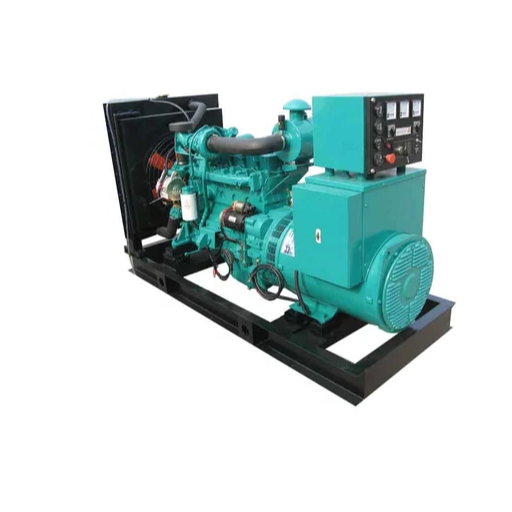
Evaluating Power Needs and Power Equipment
As to when you are selecting the best portable generator, it’s important to look at the power requirements based on the equipment you have. Make the calculations considering both starting watts (surge power) and running watts (continuous power). For example, essential appliances like refrigerators require 1200 – 1500 starting watts and depend on 800 – 1000 running watts whereas circular saws may demand upwards of 2400 watts during startup.
Voltages also have to be taken with equal responsibility and care for sensitive equipment. Some modern construction has portable generators with clean power and low levels of harmonic distortion, which are better for electronics like laptops, tablets, and even medical tools. Harmonically clean power electronics will also improve the equipment’s overall efficiency. Ensure that the generator has a sufficient number and types of general readiness and automotive sockets from 120V standard and 240V twist lock to meet the needs of all connected devices.
Consider the fuel tank size of the generator and how much time it will work to match your intended usage. The bigger the gas tank, the better; however, for models with dual fuel capabilities improves not only flexibility but also trustworthiness. By following these rules, you are sure to have all your power needs covered with a generator that checks all the boxes for your requirements.
Factors Influencing the Generator Market
Numerous important factors influence the inline peripheral technologies market and fuel its demand, as well as the level of development of technologies. One adjustment was the increase in the frequency of severe weather phenomena such as hurricanes and snowstorms, which not only disrupt power supply but also escalate the demand for reliable backup power systems. Standby power sources are becoming relevant for individual households due to the robust increase in remote work and off-the-grid lifestyle, and hence, the demand for portable and efficient sustainable generators has skyrocketed.
Changes in energy policies and environmental protection policies have a great significance in the market as well. Every policymaker is now pushing the envelope to adopt clean energy solutions, so there is a meter increase in generator development and adoption of low-emission generators and renewable energy systems. Moreover, new technologies have provided competitively advanced features as inverter technology, which improves fuel cost index and allows for cleaner emission-powered fuel that is safe for more fragile electronic weapons. All of these developments capture the expectation of consumers who are increasingly looking towards investing in reliable devices that enhance performance and also use less energy.
The pricing and production of generators are affected by the global supply chain, material costs, and geopolitical aspects. For instance, the availability of certain materials like steel and semiconductors heavily impacts the manufacturing schedule and expenses. Moreover, the development of infrastructure in specific regions and the pace of urbanization increase the demand for industrial and commercial generators, especially in developing countries where the power grid is unreliable. All these factors combined determine the direction of the generator market while simultaneously showcasing the need for constant innovation and flexibility in responding to shifting consumer demands.
How Do Industrial Generators Differ from Home Standby Generators?
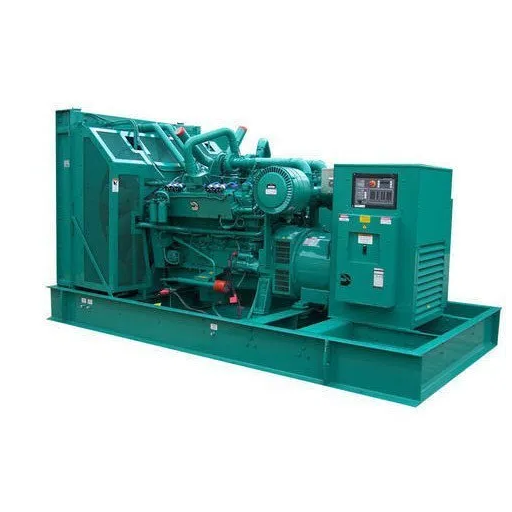
The Role of Industrial Generator Sets in Powering Large Facilities
Like other power backup options, industrial generator sets are also used for standby power generation, but their capabilities well exceed others. They are tailored to the needs of multi-operational power activities, and they provide power for the uninterrupted continuous operation of systems, which, in the case of halting operations, would lead to great operational or financial loss. Such generators are high-capacity output machines that work within the range of hundreds of kilowatts and several megawatts.
They can also be used as a backup to primary systems for patients in critical condition in hospitals and commercial complexes. Everything is being done to enhance not just the product quality but also service delivery performance, along with power reliability. Available with sophisticated control mechanisms, these ATG sets allow for full integration into the existing power framework, offering automatic switching capabilities during outages. Unlike home standby generators, industrial generators are made using reinforced components and durable materials able to withstand demanding conditions over a long period.
Real-time monitoring, predictive maintenance, and recording fuel consumption are some of the features added due to advancements in technology over the years. Such integration helps improve power management systems at a given establishment. Modern versions of the machine allow using more than one type of fuel, thus offering the facility flexibility with fuel costs available further underlining the relevance of the generator in sustaining large-scale powered backed objectives.
Features of a Home Standby Generator
Home standby generators are powerful systems aimed to seamlessly back up power for home use in case of power utility failures. Each generator has an automatic transfer switch (ATS) that does power switching automatically which means there is no need for human intervention. Advanced units now come with modern monitoring systems that offer real-time mobile diagnostics, status updates, and allow remote operation.
Considerations on fuel efficiency and flexibility have been incorporated, which is why many models support dual-fuel capabilities, allowing homeowners to run the generator through natural gas or liquid propane. Newer variants now incorporate noise reduction technology that ensures quieter operation through insulated enclosures and advanced muffler systems. Furthermore, enhanced operational reliability through routine checks on system components alongside predictive maintenance features designed to identify preemptive issues increases reliability.
IoT-enabled devices are now commonplace, and some models come with connected Wi-Fi for better control and data monitoring. With the capabilities allowed, these systems can provide insights on operational performance, fuel usage, and maintenance schedules, creating robust and efficient automated power management systems built specifically for modern residential infrastructure.
Comparing Power Generation Capacities
The capacity of different methods of power generation will differ based on the energy source, system design and use case. For household backup systems, portable generators have a capacity between 1kW to 10kW, enough to power most devices and lights during outages. Standby home generators, however, come with higher power capabilities usually ranging from 10kW to 50kW or more. This enables seamless operation of larger systems such as HVAC units and multiple high-demand devices.
Renewable energy systems such as solar power depend on the size and efficiency of photovoltaic (PV) panels. A typical residential solar PV array can produce 5kW to 15kW, with storage options further helping during non-sunny periods. Furthermore, commercial and industrial solutions such as wind turbines or larger-scale diesel generators can cater to high-demand scenarios and offer hundreds of kilowatts or even several megawatts.
While selecting a power generation system, fuel or resource availability, overall efficiency and peak load requirements need to be thoroughly analysed. It can be seen observed that fossil fuel systems have unrivaled output and reliability while other sustainable options such as solar or wind systems have a small carbon emissions footprint and supports attempts towards green energy alternatives.
References
Frequently Asked Questions (FAQs)
Q: Are there any benefits to using a dual-fuel inverter generator?
A: Dual-fuel inverter generators offer flexibility by allowing the use of either gas or propane, which can be advantageous during fuel shortages. They are also known for being quieter and more fuel-efficient compared to traditional gas-powered generators, making them an excellent choice for emergency power situations.
Q: How do portable power stations differ from traditional gas generators?
A: Portable power stations are typically battery-powered and provide a cleaner, quieter, and more convenient alternative to traditional gas generators. They are ideal for indoor use and small-scale power needs, whereas gas generators are better suited for higher power demands and longer-duration usage.
Q: Why might someone choose a diesel power generator over other types?
A: Diesel power generators are preferred for their fuel efficiency and longevity. They are well-suited for large-scale power needs and continuous use, making them a reliable choice for both commercial and residential applications where a consistent power supply is critical.
Q: How do generators provide power during emergencies?
A: Generators provide emergency power by converting fuel into electrical energy, ensuring essential systems stay operational during outages. Options like gas-powered generators and dual-fuel generators offer flexibility and reliability for different scenarios.
Q: What should I consider when choosing the best generator for home use?
A: When selecting the best generator for home use, consider factors like generator size, fuel type (gas or dual-fuel), and whether you need a portable power station or a larger generator for sustained power.
Q: What are the benefits of using a dual-fuel inverter generator?
A: Dual-fuel inverter generators offer the flexibility to switch between gas and propane, providing versatility in fuel choice. They are quieter, more fuel-efficient, and provide stable power output, making them ideal for sensitive electronics and home backup.
Q: How does a portable power station differ from traditional gas generators?
A: A portable power station typically uses rechargeable batteries and is ideal for small-scale power needs, offering silent and emission-free operation. In contrast, gas generators use combustion engines to generate electricity, suitable for larger or long-term power requirements.
Q: Are there generators available for commercial use?
A: Yes, there are many generators available for commercial use, including those from the largest industrial generator manufacturers. These generators are designed to handle higher power demands and provide reliable solutions for businesses.
Q: What role does generator size play in choosing the right power solution?
A: Generator size is crucial in determining the appropriate power solution for your needs. A larger generator can power more appliances and systems simultaneously, while a smaller unit might be sufficient for basic needs. It’s important to assess your power requirements accurately.








